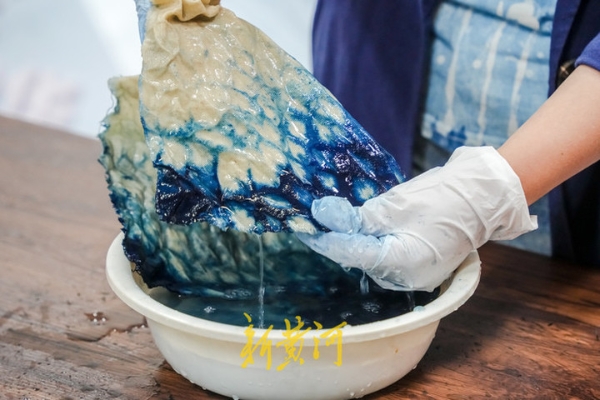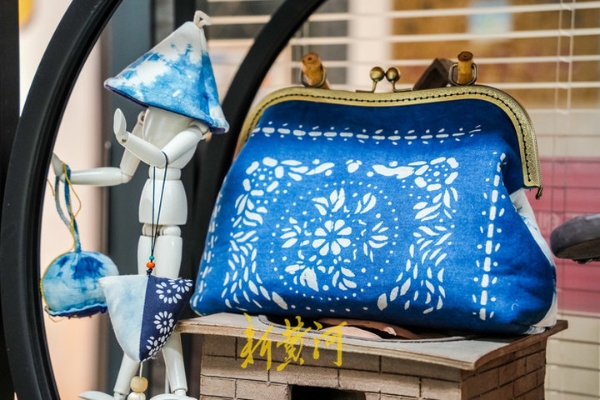Spring water tie-dyeing
Tie-dyeing is an old Chinese textile dyeing technique which has nearly 1,500 years of history. It is a method of dyeing by hand in which colored patterns are produced in the fabric by tying the fabric tightly with string before immersing the fabric in the dyebath.
Li Jie, a post-80s practitioner of the spring water tie-dyeing technique in Jinan, has been working on passing down the traditional skill. Li learned the traditional technique from her grandmother when she was a child. She was influenced by the city's spring culture and decided to merge tie-dyeing with spring water after studying and living in Jinan for many years.
Fabric after tie-dyeing [Photo/Jinan Daily]
When it comes to the spring water tie-dyeing, Li said, "It's a means to express my heartfelt feelings for the city." In Jinan, the technique has now been designated as a district-level intangible cultural heritage project.
Tying, soaking, dip-dyeing coloring, disassembling, cleaning, and drying are all processes in the tie-dyeing process, according to Li.
The most traditional method of tie-dyeing is to dye with the isatis root, a herbal plant. The root and stem can be used as medicine, and the fresh leaves can be turned into indigo, a dark blue plant dye.
Indigo is taken from the root of the isatidis plant and brewed and fermented in spring water. Because the mineral concentration of spring water is quite high, it can increase the dye's properties, resulting in a more layered color in the fabric.
"Mugwort, Chinese toon, gardenia, pomegranate skin, and dragon fruit skin, in addition to the isatis root, can be the original tie-dye pigments," Li said.
A handbag with a unique tie-dye design [Photo/Jinan Daily]






